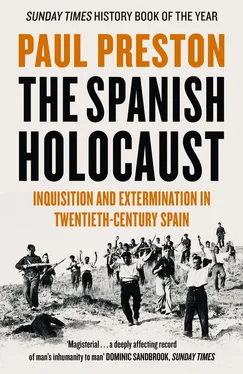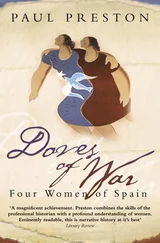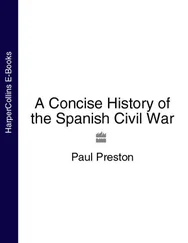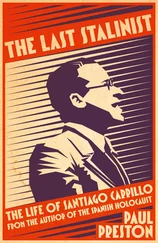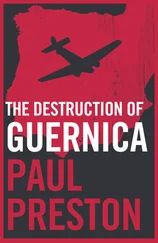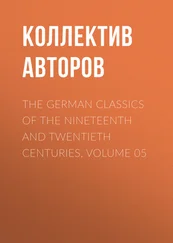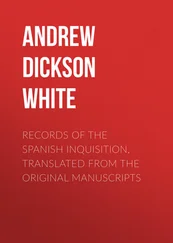In Salamanca and elsewhere, there were regular acts of violence perpetrated against trade union members and landowners – a seventy-year-old beaten to death by the rifle butts of the Civil Guard in Burgos, a property-owner badly hurt in Villanueva de Córdoba. Very often these incidents, which were not confined to the south but also proliferated in the three provinces of Aragon, began with invasions of estates. Groups of landless labourers would go to a landowner and ask for work or sometimes carry out agricultural tasks and then threateningly demand payment. More often than not, they would be driven off by the Civil Guard or by gunmen employed by the owners. 18
In fact, what the landowners were doing was merely one element of unequivocal right-wing hostility to the new regime. They occupied the front line of defence against the reforming ambitions of the Republic. There were equally vehement responses to the religious and military legislation of the new regime. Indeed, all three issues were often linked, with many army officers emanating from Catholic landholding families. All these elements found a political voice in several newly emerged political groups. Most extreme among them, and openly committed to the earliest possible destruction of the Republic, were two monarchist organizations, the Carlist Comunión Tradicionalista and Acción Española, founded by supporters of the recently departed King Alfonso XIII as a ‘school of modern counter-revolutionary thought’. Within hours of the Republic being declared, monarchist plotters had begun collecting money to create a journal to propagate the legitimacy of a rising against the Republic, to inject a spirit of rebellion in the army and to found a party of ostensible legality as a front for meetings, fund-raising and conspiracy against the Republic. The journal Acción Española would also peddle the idea of the sinister alliance of Jews, Freemasons and leftists. Within a month, its founders had collected substantial funds for the projected uprising. Their first effort would be the military coup of 10 August 1932. And its failure would lead to a determination to ensure that the next attempt would be better financed and entirely successful. 19
Somewhat more moderate was the legalist Acción Nacional, later renamed Acción Popular, which was prepared to try to defend right-wing interests within Republican legality. Extremists or ‘catastrophists’ and ‘moderates’ shared many of the same ideas. However, after the failed military coup of August 1932, they would split over the efficacy of armed conspiracy against the Republic. Acción Española formed its own political party, Renovación Española, and Acción Popular did the same, gathering a number of like-minded groups into the Confederación Española de Derechas Autónomas. 20Within a year, the ranks of the ‘catastrophists’ had been swelled by the creation of various fascist organizations. What all had in common was that they completely denied the democratic legitimacy of the Republic. Despite the legalist façade of Acción Popular and the CEDA, its leaders would frequently and unrestrainedly proclaim that violence against the Republic was perfectly justifiable.
Barely three weeks after the establishment of the new regime, at a time when the government was notable mainly for its timidity in social questions, Acción Nacional had been created as ‘an organization for social defence’. It was the creation of Ángel Herrera Oria, editor of the militantly Catholic (and hitherto monarchist) daily El Debate. A shrewd political strategist, Herrera Oria would be the brains behind political Catholicism in the early years of the Second Republic. Acción Nacional brought together two organizations of the right that had combated the rising power of the urban and rural working class for the previous twenty years. Its leaders came from the Asociación Católica Nacional de Propagandistas, an elite Jesuit-influenced organization of about five hundred prominent and talented Catholic rightists with influence in the press, the judiciary and the professions. Its rank-and-file support would be found within the Confederación Nacional Católico-Agraria, a mass political organization which proclaimed its ‘total submission to the ecclesiastic authorities’. Established to resist the growth of left-wing organizations, the CNCA was strong among the Catholic smallholding peasantry in north and central Spain. 21
Acción Nacional’s manifesto declared that ‘the advance guards of Soviet Communism’ were already clambering on the ruins of the monarchy. It denounced the respectable bourgeois politicians of the Second Republic as weak and incapable of controlling the masses. ‘They are the masses that deny God and, in consequence, the basic principles of Christian morality; that proclaim, against the sanctity of the family, the instability of free love; that substitute private property, the basis and the motor of the welfare of individuals and of collective wealth, by a universal proletariat at the orders of the State.’ In addition, there was ‘the lunacy of Basque and Catalan ultra-nationalism, determined, irrespective of its sweet words, to destroy national unity’. Acción Nacional unequivocally announced itself as the negation of everything for which, it claimed, the Republic stood. With the battle cry ‘Religion, Fatherland, Family, Order, Work, Property’, it declared that ‘the social battle is being waged in our time to decide the triumph or extermination of these eternal principles. In truth, this will not be decided in a single combat; what is being unleashed in Spain is a war, and it will be a long one.’ 22
By 1933, when Acción Popular had developed into the CEDA, its analysis of the Republic was even less circumspect: ‘the rabble, always irresponsible because of their lack of values, took over the strongholds of government’. Even for Herrera Oria’s legalist organization, the Republic was created when ‘the contagious madness of the most inflamed extremists sparked a fire in the inflammable material of the heartless, the perverted, the rebellious, the insane’. The supporters of the Republic were sub-human and, like pestilent vermin, should be eliminated: ‘The sewers opened their sluice gates and the dregs of society inundated the streets and squares, convulsing and shuddering like epileptics.’ 23All over Europe, endangered elites were mobilizing mass support by stirring up fears of a left presented as ‘foreign’, a disease that threatened the nation and required a crusade of national purification.
Both at the time and later, the right-wing determination to annihilate the Republic was justified as a response to its anti-clericalism. However, as had been amply demonstrated by its enthusiastic support for the dictatorship of Primo de Rivera, the right hated the Republic for being democratic long before it was able to denounce it for being anti-clerical. Moreover, those who opposed the Republic on religious grounds also cited social, economic and political grounds, especially in opposition to regional autonomy. 24
Nevertheless, the religious issue was the occasion of intense conflict, both verbal and physical. On Sunday 10 May 1931, the inaugural meeting of the Circulo Monarquico Independiente in the Calle Alcalá ended with loudspeakers provocatively blaring out the Royal Anthem. Republican crowds returning from an afternoon concert in Madrid’s Parque del Buen Retiro were outraged. There was a riot; cars were burned and the offices of the monarchist newspaper ABC in neighbouring Calle Serrano were assaulted. The fierce popular reaction spilled over into the notorious church burnings which took place in Madrid, Málaga, Seville, Cádiz and Alicante from 10 to 12 May. This suggested how strongly ordinary people identified the Church with the monarchy and right-wing politics. The Republican press claimed that the fires were the work of provocateurs drawn from the scab union, the Sindicatos Libres. Indeed, it was claimed that, to discredit the new regime, young monarchists had distributed leaflets inciting the masses to attack religious buildings. 25
Читать дальше
